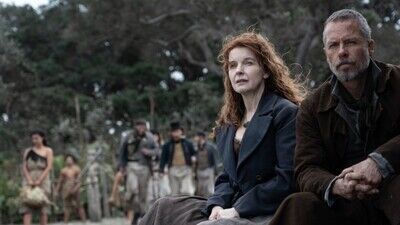Tamahori and co-writer Shane Danielsen could have taken some historic liberties in loosely basing their script on true occasions, creating composite characters or writing in new figures. Nonetheless, if the aim of “The Convert” was to present a way of New Zealand when most of its residents referred to as it by its Māori title, Aotearoa, then it’s profitable. Cinematographer Gin Loane frames Tamahori and Danielsen story with the attractive pure panorama round them, generally capturing in stark distinction to point out off the darkish sandy earth, inky rivers, and cloudy skies. In different moments, the digicam revels within the crashing white waves, formidable rocky cliffs, and luscious inexperienced forests, sometimes shifting in to concentrate on a chook or plant, grounding its story with a way of place like no different. Thomas sees this a part of the world for the primary time, and the digicam mirrors his curiosity. Likewise, the visible type can also be used to intensify the narrative’s extra dramatic scenes, like when Rangimai greets her father, the chief, after the homicide of her husband. The reunion occurs close to the shoreline, the place the soil is darkish, and the skies seem stormy, a harbinger for the battle forecast forward.
“The Convert” is Tamahori’s third function set in New Zealand. His breakout movie “As soon as Had been Warriors” launched him to worldwide audiences, and many years later, he returned with “Māhana,” a interval piece following a Māori household within the Sixties. This journey again in time for “The Convert” is probably one of many extra bold titles in his filmography, one painstakingly researched for correct particulars to recreate Māori properties, costumes, and dialect, stocked with quite a few extras and supporting characters to deliver the final of the nation’s pre-colonial days to the massive display screen. In that sense, the film takes on a bittersweet be aware, bringing historical past to life in all its messy complexity – and the on a regular basis gamers who form it.












